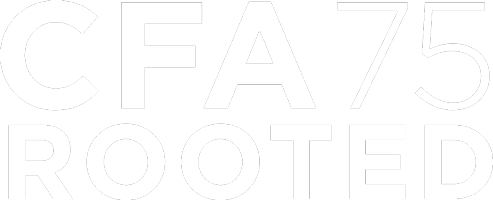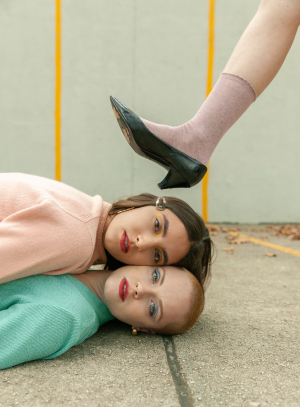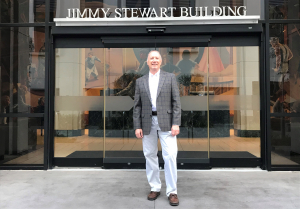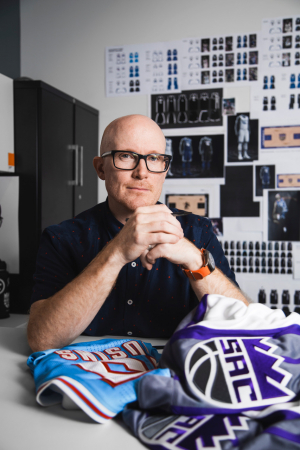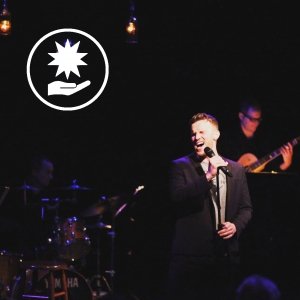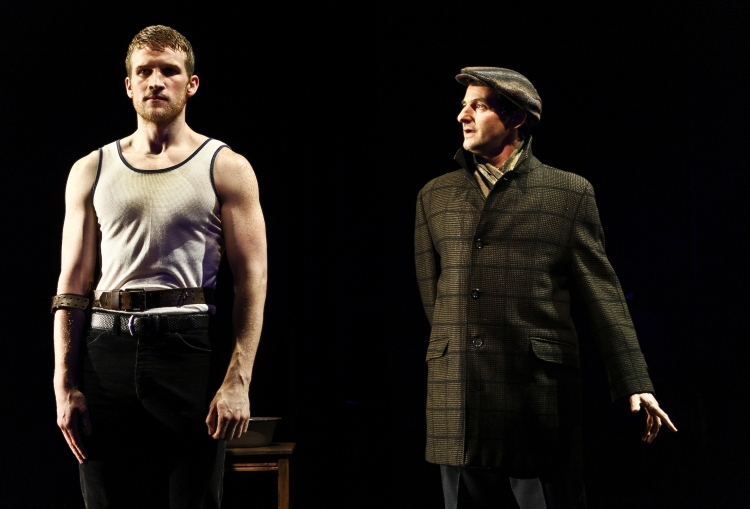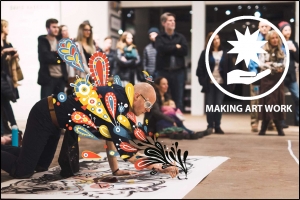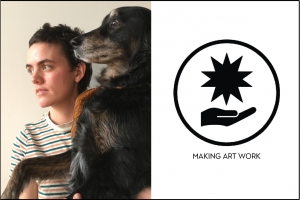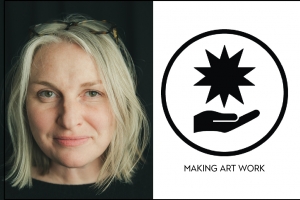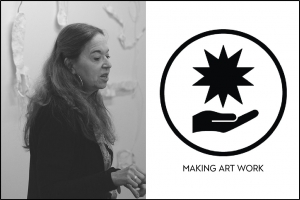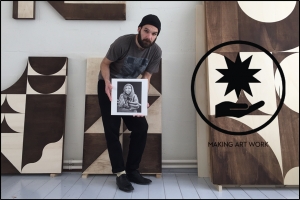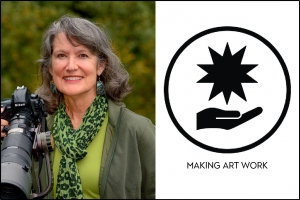Displaying items by tag: Making Art Work
MAKING ART WORK is a series that taps into the knowledge and experience of seasoned creatives from our community and beyond for the benefit of our students.
Erica MacLean is a photographer, choreographer, director, and performer based in Brooklyn, NY. Originally from Phoenix, Arizona, Ms. MacLean began training at the start of college, where faculty and staff encouraged her to pursue dance as a full-time career. Since then, she has received training in Ballet and Modern Dance at Glendale Community College, Arizona State University, and the University of Utah School of Dance, where she received her BFA. She has performed in the works of Mariah Maloney, Ihsan Rustem, Guy Thorne, Eric Handman, Rebecca Rabideau, Quitalyn Cheramie, Katie Noletto, Elijah Labay, Brianna Lopez, and Patrick Delcorix to name a few. Along the way, MacLean stumbled upon an interest in photography as she attempted to document her choreographic work. She now photographs many fashion and fine art projects/editorials, and has published work in Harper’s Bazaar Poland, Vogue Poland, Vogue Italia, Theme Mag, Floated and many others. She has also recently photographed NYFW FW20 for several designers, including Claudia Li, Collina Strada, and Kim Shui. For all of her projects, MacLean hopes to combine the landscape of human architecture and fashion in an attempt to allow others to create a subjective narrative.
Have you always been equally interested in photography and dance? What affected your decision to get your bachelor's degree in dance?
I haven’t always been interested in both dance and photography, and I’ve definitely never focused on either in equal ratios. When I really love something, I’ll spend 70% of my time on it and the 30% left over gets taken up by other distractions. When I was at the University of Utah, I mostly worked to develop choreographic projects and dance, and photography was just something I picked up to enhance what I was already creating. I wanted to do the best I could to document my work, so I picked up a camera and started shooting.
I got my degree in dance because at the time, it was what made me happiest. I, of course love movement, but the closeness and support of the community was what really made me shift over. I felt secure knowing everyone around me was on a similar path. When I look back, the most valuable things I gained from the U was how to openly view/respect art from all angles, and to stop making work for the sole purpose of pleasing other people. I really learned how to vocalize why I did/didn’t like certain work, why/how a work is important, and if you made something it’s okay if someone didn’t like it. You made choices based on what was important to you, not them. Don’t sweat it so much.
How do dance and photography blend in your everyday life now? 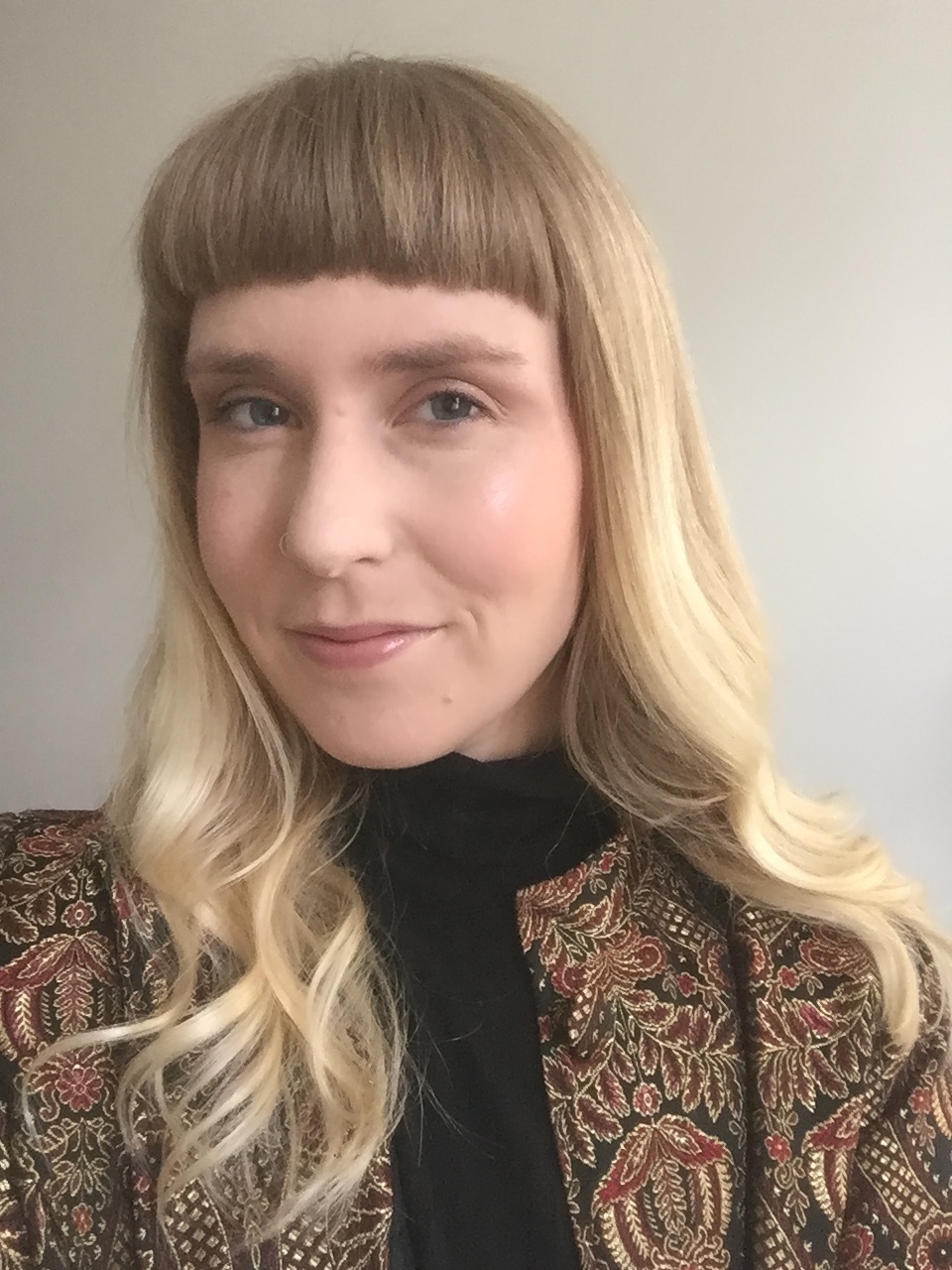
Currently, dance comes into my life as choreography in photographs. I’m mostly photographing for creative fashion and editorial content, and less “dance” type photos. When I’m developing these types of images, it’s literally in the same way that I’d create a choreographic work. I turn on some music, think it up, and focus on texture, color, light, shapes, and mood. I always think of this thing my professor, Ellen Bromberg, once told me. She said “You are creating the world we are going to live in for a little while. What goes into it?” This informs almost all of my work.
To be clear, at the moment, I’m not dancing all of the time. Dance in NYC is VERY expensive, and I only take class when I can afford it. In a way, I’ve blended the two because I love and want to do both, but also I’ve had to make sacrifices to sustain a living.
When I look back, the most valuable things I gained from the U was how to openly view/respect art from all angles, and to stop making work for the sole purpose of pleasing other people. I really learned how to vocalize why I did/didn’t like certain work, why/how a work is important, and if you made something it’s okay if someone didn’t like it. You made choices based on what was important to you, not them. Don’t sweat it so much.
What prompted your decision to move to New York City? What has been the most unexpected aspect of your life and career there?
I moved to NYC because there was a huge opportunity for both dance and photography. I was interested in photographing fashion, but I also wanted to live in a city with a large dance community. It was a pretty obvious choice. The most unexpected aspect of moving to NYC was that it’s actually pretty affordable to live here. That’s about it! Everything, for the most part, is as expected.
How did you get connected to Ballet West as an intern? What did you gain there?
When I was at Ballet West, I was working alongside Beau Pearson specifically as his photography intern. I was a follower of his on Instagram, and loved the technical lighting aspects of his images, so I reached out. I basically worked with him on whatever projects he had going on at the time, and this happened to be “The Shakespeare Suite” and various portraits of dancers from the company. I shot alongside Beau for many rehearsals, promotional photoshoots, and dress rehearsals at the Capitol Theatre. Because of this, I gained a ton of insight in retouching images in photoshop. I learned to apply the techniques he uses ( frequency separation/dodge&burn) in my own photos, and still use them when working various editorial projects.
What were the key steps in building your portfolio of photography clients, and what was the most challenging or intimidating job you have taken on?
When I was building my portfolio, I really had to think about what it was that I wanted to do in my career and go from there. In this case, I like photographing people, extravagant clothes, movement, and some sort of narrative. So it made sense for me to create a book with fashion and editorial in mind. My biggest dream is to photograph/creative direct for Rodarte and Gucci, and for this to manifest, I have to show them that I’m very capable, versatile, and have a very clear sense of personal style. I’m always in the process of developing my book, but a key step to get here was to shoot as much as I possibly could to develop my style. I’d write down a shot list/concepts, pick up some cool clothes from the thrift store, and force my friends to shoot with me(they didn’t mind too much). Over time, I’d just add or get rid of relevant photos, and always keep track of the overall style.
The most intimidating job I’ve taken on so far was very recent. I shot photos at three official shows during New York Fashion Week for Claudia Li, Collina Strada, and Kim Shui. I worked primarily on backstage images for Claudia and Kim, then shot portraits of Hayley Williams from Paramore for Collina Strada. It was pretty scary because I’ve never had to do anything remotely like this. There are people running around everywhere, stylists quickly forcing models into outfits, and production crew shouting left and right. It was also challenging because although I was a house photographer and working specifically for the designers, there’s unfortunately a lot of misogynistic attitudes toward female photographers in the industry. I found myself often pushed around, and stepped on or in front of, by a sea of male photographers while I was just trying to do my job. I learned pretty quickly that if I wanted to get a good shot, I had to take up a lot of space, and be extremely vocal with them. And although it was difficult, I really did have an incredible experience.
Follow Erica's work on Instagram at @erica_maclean or at https://www.ericamaclean.com/.
MAKING ART WORK: Rod Davis, VP of Music Business Affairs for Sony Pictures Entertainment & School of Music Alumnus
MAKING ART WORK is a series that taps into the knowledge and experience of seasoned creatives from our community and beyond for the benefit of our students.
Rod Davis is the vice president of Music Business Affairs for Sony Pictures Entertainment. In this role, Davis is responsible for handling music transactions from negotiations for composers, musicians, and music supervisors, to recording artists and soundtrack album agreements for feature films, television series, game shows and interstitial works. Davis earned his bachelor’s degree at the University of Utah School of Music, his master’s in Music at University of Southern California, and his J.D. at Southwestern University School Law School. Prior to his work at Sony Pictures Entertainment, Davis acted as senior counsel to Metro-Goldwyn-Mayer Studios, handling music rights and transactions for the studio.
What was your early relationship to music? What were your initial career ambitions?
I have played piano since I was seven years old. Initially, I was planning on becoming a concert pianist, but I quickly realized that I was going to enjoy teaching music rather than living the life of a professional touring musician. Eight hours a day of practicing alone in a room is a big commitment -- there are people that can do that, but that life was not for me. So, when I went to the University of Utah, I sought a degree in music education, with the goals to teach high school music and then eventually teach at the university level.
However, all of a sudden you can come to a divide in the road and take a different career path. Fortunately for me it was not a true diversion, because I have always stayed in music.
Who were your most impactful mentors at the University of Utah?
I had some wonderful professors while at the U: specifically, Dr. Newell Weight, the conductor of the University of Utah A Cappella Choir and music education professor, Dr. Ed Thompson who replaced Dr. Weight conducting the A Cappella Choir and later became the chair of the music department, and Betty Jeanne Chipman who was an amazing voice teacher. I accompanied Chipman’s students in their voice lessons and performances.
The traits and similarities about these three people were: they had a real passion for music, they were musically gifted, and they diligently worked to accomplish their goals. You could tell they loved music, it was in their souls. They had a desire to teach and to share. That combination inspired me. It is why I continued on in music education and eventually was hired to teach music at Bountiful High School, a job I truly loved.
When did law come into the picture?
I wanted to teach high school music and then move to the university setting, so the career path looked like: get a master’s degree and then my doctorate. Dr. Weight had earned a graduate degree at the University of Southern California. I truly admired him, so I decided that’s where I would go. I went to USC to get my master’s in music. And that’s where I first became aware of music law and music attorneys, careers I had never heard of before.
In high school I had two real passions: music, and speech & debate. Even back then, I was thinking of pursuing music education, or possibly law. All of a sudden in midstream of my music teaching career, when I found out there were attorneys practicing music law -- it was like a lightbulb was turned on.
This was a way to combine my two passions – Music and Law.
I love my job. I love what I do, and it’s music continually, every day.
What do you consider your first big break?
I had just graduated from law school, passed the bar exam, and was looking for a job. On the back page of Variety, the motion picture entertainment magazine, there was an ad placed by MGM studios (Metro-Goldwyn-Mayer). They were seeking an attorney for their Music Affairs group with at least two years’ law firm experience. Well, I was right out of law school. But, while I was there, I was a legal intern with Warner/Chapell Music, one of the largest music publishers in the world, and with ABC television. Therefore, I had some legal experience in entertainment, and a lot of experience in music. I sent in my resumé. Shortly thereafter, they asked me to come in for an interview and then another interview. It was a really coveted position with numerous applicants. When they offered me the job, it was just like a dream come true.
I knew there were so many candidates from law firms that had applied. When I asked MGM why they had chosen me for the job, they said they wanted a music attorney that could do all the legal work and analysis, but also truly knew music as a musician.
We’re in the business of creating tremendous amounts of music for our motion pictures. There could be situations where we find out that someone is infringing one of the studio’s music copyrights, or someone makes a claim that someone else’s music has been used in one of our motion pictures without authorization. At this point there are two steps of analysis that need to be done: first, music analysis ( Has there been copying with the harmonic structure, melody, or rhythm, etc.?) Secondly, legal analysis (Are these two pieces of music substantially similar in a legal context?). Because of my background, I was able to do both types of analysis. And that’s why the studio selected me.
The thing I want to share with students is just how big the music industry is. It’s not just performance -- of course without performance, writing and composing, you wouldn’t have music. But whether you are talking about all of the record labels, film and television producers, music publishers, managers, agents, and all of the products that require music, the industry is quite expansive.
What are some highlights of your work so far?
I was able to assist in the music legal affairs transactions for several “James Bond” movies, which was exciting, and also “Men in Black,” “Jumanji”, “Spider-Man”…
But I have to say that one project that I really enjoyed and stands out was being the music affairs attorney on the television series “Breaking Bad”. For all its seasons, it was such a complex show, and the music was so unique. From the music by the composers, to what they were licensing, they were finding music in the strangest places and I had to make sure it was all legally clear. It was really something I was so proud to have been a part of.
Another project is the “Outlander” series which season 5 is currently airing on Starz. I love “Outlander”. It's such a great property and handling the music affairs for it is really rewarding.
What advice would you give undergraduates?
The thing I want to share with students is just how big the music industry is. It’s not just performance -- of course without performance, writing and composing, you wouldn’t have music. But whether you are talking about all of the record labels, film and television producers, music publishers, managers, agents, and all of the products that require music, the industry is quite expansive. Music is pervasive in our society, it’s around us all the time, and there are many players making it happen. The world is wide open. The most important thing is honing your skills and becoming the best person you can, and the best musician or artist you can. When you strengthen those skills, you put yourself into a marketable position. There’s so much out there to be part of in music and the fine arts.
You might think that there’s one thing you want and that’s the only option for your career. When music law became available, in my case, it opened up so many new and wonderful opportunities for me. There are music scenes all over -- from classical to popular, to hip hop, jazz, symphonic orchestras, video games or even the music you hear on your phone when you’re on hold, or in the restaurant, or in a movie theatre. There are organizations out there to help collect income for the writers, and the performers. To be part of it, where every day you have contact with music, if you have the passion for it, there are so many avenues that you can pursue.
I started as a music teacher at Bountiful High School with 120 students in the choral department and within five years I built up the department to where I was teaching 500 students a day — almost half of the students at the high school were participating in music courses. People enjoy being a part of music. To leave what was a successful teaching career and change direction, it had to be something that would be just as rewarding, stimulating, and exciting, and it was! I’m glad I took that leap of faith.
MAKING ART WORK: NO. 20., Creative Director Ryan Brijs
MAKING ART WORK is a series that taps into the knowledge and experience of seasoned creatives from our community and beyond for the benefit of our students.
Ryan Brijs is the Senior Director of Creative for the Sacramento Kings. An alumnus of Art & Art History at the College of Fine Arts, Brijs shared his most impactful mentors, moments of triumph from his career so far, and his advice for jumpstarting success while still earning a degree. 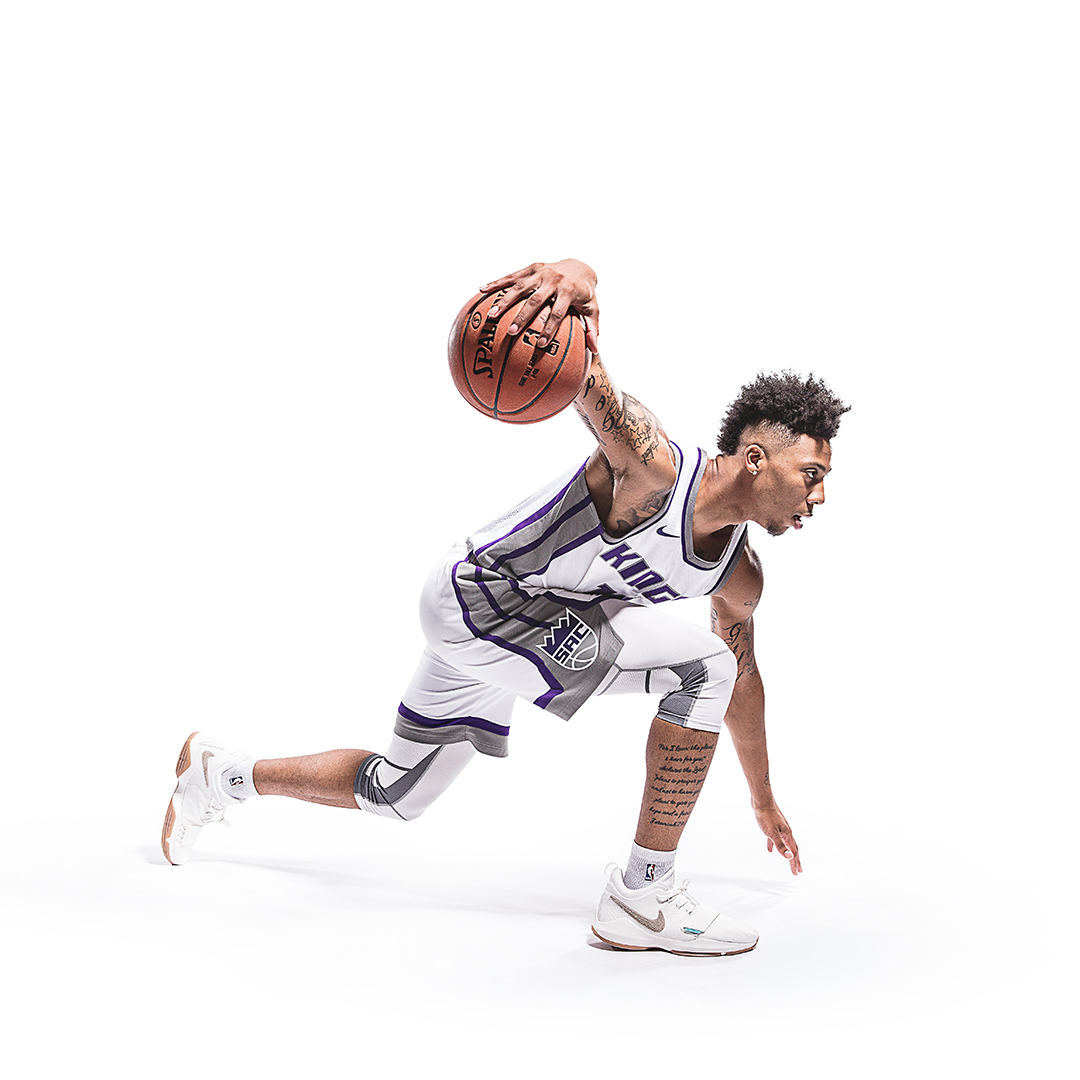
What did you gain from your education at the U that has proved most useful in your career?
I had many great professors while in the design program at the U, two of which were particularly influential for me and taught me two very important skills that have helped me greatly in my career. I was lucky to have McRay Magleby the last year of his teaching career. He taught us how to talk about design, how to present our work and how to critique the work of others. Being an effective communicator is an invaluable skill to have as a creative and I am very grateful for those early opportunities our class was given. Another skill I picked up early in my education was from professor Carol Sogard. She taught us to think creatively. Design wasn’t just about making something cool to look at, it’s about finding meaning, purpose or telling a story, using design to influence others or to help others making an emotional connection through design. Since that early lesson I have strived to have meaning or a strong concept behind the work I do.
What are your proudest moments from your career post-grad?
I was fortunate enough to play a big role in the rebrand of the Sacramento Kings. Branding or rebranding a company is a big undertaking, rebranding a sports team is completely nerve-racking. The process was two years in the making and we knew a lot of eyes would be on us so we definitely felt the pressure to get it right. We assembled the right team for the project and end up pouring our whole hearts into it. We created a full system that honored the franchise heritage while paying tribute to our civic and franchise pride that has lasted and grown for a generation. This project was well received and gained national attention. The next year I was recognized as Ad Person of the Year by the Sacramento Ad Club, an honor that I’ll never forget. This opened the door for speaking opportunities with Creative Mornings and the American Advertising Federation.
Any unexpected twists in your path as an artist?
The market downturn in 2008 certainly was an unexpected twist for me in my career. I had always planned on working in advertising for an ad agency, but when the economy crashed fate took me on a different course. I took a job with an in-house creative team focused primarily on packaging design and story-telling around products from start to finish. I loved this process and this experience help lead me to where I am today. 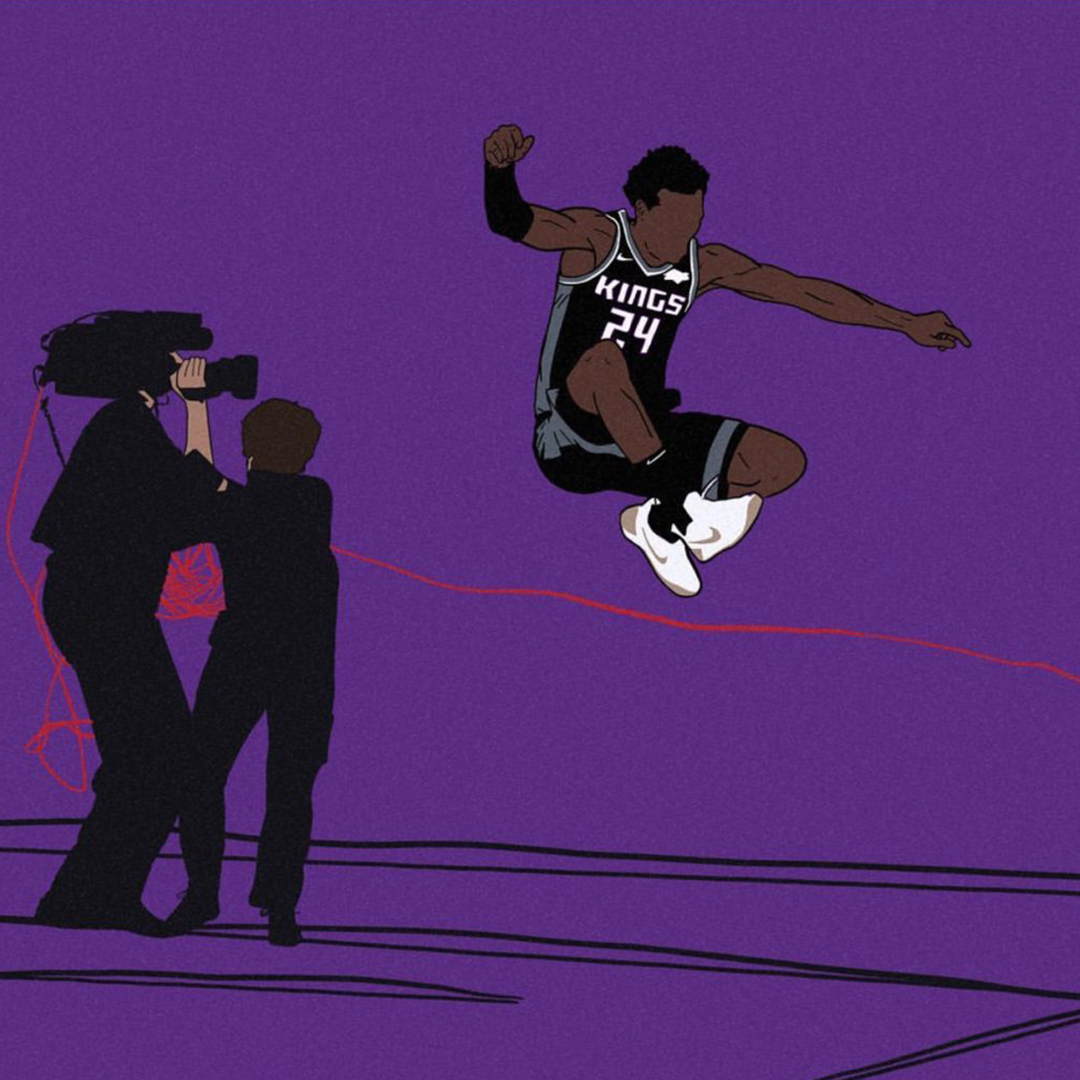
What can students be doing while they are studying here that you feel will have the biggest impact on their success when they graduate?
The sooner they can identify what they are truly passionate about the better. Art, design and advertising are things I was passionate about. I also really loved sports, basketball in particular. Growing up watching the Jazz in the 90’s really solidified that. It wasn’t until later in my career that those two interests merged, and when they did I started producing the best work of my career. If you can find a brand, a product, a cause, or value that you really support or enjoy and marry that with your passion for design your work will be so much better and you’ll find great joy in the process.
You can follow Ryan Brijs' work here and on Instagram.
MAKING ART WORK, No. 19: Actor Claybourne Elder
MAKING ART WORK is a series that taps into the knowledge and experience of seasoned creatives from our community and beyond for the benefit of our students.
We had the pleasure of speaking with Broadway actor and CFA Department of Theatre Alum Claybourne Elder for this episode of MAKING ART WORK.
What skills or mentors from your time at the U have had lasting impact as you built your career?
I learned so many valuable things from my time at the U. Definitely the most important class I took was theatre history. Not only because that's where I met my now mentor, Sydney Cheek-O'Donnell, but because that class taught me how to respond in my own voice to theatre. Not only did I learn about the most important plays and playwrights in history, but I learned to talk about them and have opinions. This has proved an invaluable skill to me in my life as an artist.
Any unexpected twists in your path as an artist?
Part of the fun of being an actor is that your life is full of unexpected twists. One day you're sitting around your apartment and the next day you have an audition that changes your life. The hard part is the in-between times. Times when you are waiting to book your next job or waiting for rehearsal to start on your next project. Those are the times you have to be extra mindful and use the time to learn new skills or hone your craft. When I first auditioned for "Bonnie and Clyde," which was the first show I did on Broadway, they called me in for a different role than the one I ended up playing. In fact, they had already cast someone in the role I ended up doing. But I went in to the audition having worked hard to be prepared. After I auditioned they asked if I could step out and wait in the lobby for a minute. I waited in the lobby for a few minutes and the casting director came out and said, "So, there's another role in the show that we'd like you to read for. We've already cast someone but they'd like you to read for it anyway." He handed me a bunch of pages from the script and gave me about 10 minutes to learn them. I went back in the room and gave my audition for the other character. Two days later they called and said they wanted to give me the job instead of the original person they were going to cast. You just never know how it's going to happen!
If you could talk to undergraduate you, what would you say or advise?
Never underestimate people and always be kind. Kindness and generosity of spirit are what will keep you afloat in your career as an artist.
Where do you look to fill your well when inspiration runs low?
Everywhere! One of my favorite things about living in New York City is there is art everywhere. Some days when I have a bad audition I take myself to a museum to get myself out of my head. But you can do that anywhere! Read a book, go see a great film, listen to someone tell their story. Get outside your head and into the world.
About Claybourne Elder:
Claybourne Elder is a Drama Desk and Lucille Lortel nominee. Originally from Springville, Utah, he earned his Bachelor's degree in dramaturgy and directing from the University of Utah. He starred on Broadway in “Bonnie and Clyde,” “Sunday in the Park with George” (with Jake Gyllenhaal) “Torch Song” and “Sondheim on Sondheim” at the Hollywood Bowl. He can be heard on the cast recordings of “Bonnie & Clyde,” “Road Show,” “Venice” and “Sunday in the Park with George.”
Off-Broadway, Elder appeared in the original companies of Stephen Sondheim's “Road Show,” Tennessee Williams' “One Arm” (Drama Desk Nomination Best Actor), and in the revivals of “Allegro” (Lucille Lortel Nomination Best Actor), “Two by Two” (with Jason Alexander), and “Do I Hear a Waltz?” He has premiered works by Stephen Sondheim, Frank Wildhorn, Bill Finn, Stephen Flaherty and Lynn Ahrens.
His regional credits include George in the Helen Hayes award winning Signature Theatre revival of “Sunday in the Park with George” (Arlington, VA), Wolf/Prince in Moises Kaufman’s “Into the Woods,” “Angels in America” (KC Rep, dir. David Cromer), “Oklahoma” (Curly), “West Side Story” (Tony), “Cinderella” (Prince), “Passion” (Giorgio), and “Pippin” (Pippin).Elder was a series regular, Pete O'Malley, on the WB's “The Carrie Diaries.” Film credits include “Flatbush Luck,” and “It Could Be Worse.” He made his cabaret debut at 54 Below in NYC and his solo show “You and Me and Sondheim” has played to sold out houses around the country and in London.
He lives in New York with his husband Eric Rosen who is a playwright and director. They have one son, Bo, who is two years old.
MAKING ART WORK, No.18: David Habben
By Noelle Sharp
MAKING ART WORK: Advice for artists, from artists is a series that taps into the knowledge and experience of seasoned creatives from our community and beyond for the benefit of our students. We had the pleasure of speaking with artist and CFA Alum David Habben for this episode of MAKING ART WORK.
What do you wish you had known when you were a less experienced artist?
That to truly progress and find success, you have to have a plan. It would’ve been great to know that there are actual career paths that involve creativity and artistic skill. Like many other artists, I felt that you just make your best work and if you’re lucky, someone buys it. Knowing the options and then working toward them would’ve made a world of difference. That being said, I’m grateful for how my own irregular path has led me to teaching and to the opportunity to help the rising generation prepare for their future in more specific ways than I did.
How do you find balance between creating your own art and using your creative talents for other projects (jobs, collaborations, etc.)?
It’s actually the unique commissions and unexpected collaborations that fuel the new ideas in my own work, so I welcome the opportunities whenever I can find them. Being able to see through someone else’s eyes, whether that be for a product or just for exploration, is a fantastic way to rethink our own work. My biggest steps forward have always been the result of a collaborative experience.
What’s the most useful advice you were given?
I think the advice I remember the most is to not be afraid to be a small fish in a big pond. Bill Carman (Boise State University) taught me that and it’s been proven right throughout my life. We should never be afraid to get out of our comfort zone and be the new kid, the rookie, or the novice.
MAKING ART WORK, No.18: Alyce Carrier
By Noelle Sharp
MAKING ART WORK: Advice for artists, from artists is a series that taps into the knowledge and experience of seasoned creatives from our community and beyond for the benefit of our students. We had the pleasure of speaking with artist and CFA Alum Alyce Carrier for this episode of MAKING ART WORK.
What do you wish you had known when you were a less experienced artist?
I wish that I could have had a better understanding that experience isn’t linear, in the sense that the process of learning something is made up of a lot of setbacks and mistakes. It still isn’t any easier when I find myself drowning in a wrong decision, but at this point I can recognize that it is not only part of the process, but an essential one, and this insight makes it easier to not be as fearful of walking through the wrong door. With this said, the comfort that comes with making mistakes is of immense privilege. The time and space I have to explore is something that cannot be taken for granted, I am very lucky to have room to take risks and I have no plans to waste any time worrying about what could be, what will be, or what should have been.
How do you find balance between creating your own art and using your creative talents for other projects (jobs, collaborations, etc.)?
This is a tough thing, and I feel like I could go on and on about it, but I will try not to spiral. For me, the balance comes with an understanding that I am not in a place to make a living off of the art I make. In college I had it in my head that monetary compensation from your work meant success, and in small ways I still believe this but the biggest shift for me is understanding the luxury of being able to make art without the pressure of rent being due. I work at a job where I
have a boss and I get a paycheck every two weeks. Sometimes this feels bad, like I am wasting my time working a meaningless job, but I just take a deep breath and remind myself that it’s all for the studio. The job as a server/bartender/barista/smoothie maker/dishwasher/janitor is a working symbol of time and space needed to continue making art that feels like it is progressing, changing, and moving forward. Eventually I want to get to a place where I am not existing in these two worlds, but it feels good to me right now to be able to take risks with my art and figure out what I want to say with my objects without worrying if they will make me money.
What’s the most useful advice you were given?
Two scoops of advice indirectly told to me by one of my favorite photographers, Alec Soth:
1. don’t try to be the best
2. get a lot of hobbies
and one scoop of advice from my dad that took me way too long to bite into, so here’s to hoping you’ll catch on sooner than I did:
1. stop asking for permission, listen to what your heart is telling you, and fight for it with undying
momentum
MAKING ART WORK, No.16: Amy Jorgensen
By Noelle Sharp
MAKING ART WORK: Advice for artists, from artists is a series that taps into the knowledge and experience of seasoned creatives from our community and beyond for the benefit of our students. We had the pleasure of speaking with maker, facilitator, educator and Executive Director and Chief Curator at Granary Arts Amy Jorgensen for this episode of MAKING ART WORK.
What do you wish you had known when you were a less experienced artist?
• Don’t be a student. Students work for grades and approval within systems. Free yourself from the mindset of the student identity. Every assignment has the potential to turn into a life-long project. Work for yourself.
• Mistakes are part of the process. Nothing goes perfectly the first time. Build re-dos into the timeline.
• There are many trajectories and no single right way forward.
• Work your chops. Learn the technical skillset and language of your medium.
• Be proactive. If you are not getting what you need, ask for it. Opportunity is everywhere, it’s up to you to act on it.
• Take risks. Understand your boundaries and reach beyond your safety zone, your creative life depends on it.
How do you find balance between creating your own art and using your creative talents for other projects (jobs, collaborations, etc.)?
I don’t really subscribe to the notion of balance. I’m all in. And I’ve found the more time, effort, and resources I pile into the mix, the more rich, saturated, complicated, big, and overwhelming this art making world becomes. It’s just starting to get interesting. The challenge of balancing personal creative practice with day jobs, collaborations, and life will always be present. Set priorities and boundaries where you must. Clear out the superfluous stuff that doesn’t matter. And find the time to support good projects and people that champion generosity and are working towards a vision you believe in.
What’s the most useful advice you were given?
• Read, write, think, dream. – John Baldesarri
• Safety is an illusion. – Amy Jorgensen (advice learned from life)
• Just do it. – Nike slogan
MAKING ART WORK, No.16: Judith Brotman
By Noelle Sharp
MAKING ART WORK: Advice for artists, from artists is a series that taps into the knowledge and experience of seasoned creatives from our community and beyond for the benefit of our students. We had the pleasure of speaking with artist Judith Brotman for this episode of MAKING ART WORK.
What do you wish you had known when you were a less experienced artist?
I came to art and art school a little later in life than many. My background had always been academic; I was initially pre-med when I started college. When I finally began making art in my mid/late 20’s, I had very idealistic notions (READ: naïve!) about what being an artist would involve. There are a few things I wish I had known when I was just beginning. I was very surprised by the amount of jealousy and competition that I saw. Among my least favorite occurrences was (and still is) when an artist tells another artist about an upcoming show and the response, instead of congratulations, is a very long silence. I think it’s terribly important to choose friends who support you through thick and thin and whose insecurities don’t continuously manifest in passive aggressive ways. On the other hand, it’s also extremely important to believe in your own work. There’s absolutely no substitute for that although we all have moments of doubt, which I believe are quite healthy. I hope this doesn’t sound contradictory but a third important piece of information that I wish I had known is to reach out to others, asking for what you need. Not everyone will respond but despite what I said about jealously, there’s a great deal of generosity out there, too!
How do you find balance between creating your own art and using your creative talents for other projects (jobs, collaborations, etc.)?
Balance is never easy and requires constant re-calibration! There are certainly times in the teaching semester when teaching prep, school commitments, and grading essays seem to take over. However, I am much more mindful than I used to be that it’s critical to always find time for my studio work. Sometimes at the end of a long teaching day, I’ll spend thirty minutes or so with studio work. Even that amount of time keeps me feeling connected to it. I also think it’s terribly important to have a work/life balance, finding time for activities that are inspiring or otherwise nourishing to you. I swim and walk at least five days a week. It’s a large time commitment but it gives back much more than it takes away. Reading is something I cannot do without; it’s a huge inspiration for my work and also invigorates me. I increasingly feel that finding time to meet with friends and have real and generative conversations (not just a few words at an opening) is critical.
What’s the most useful advice you were given?
The best advice I ever received came from the brilliant and extraordinary writer and curator, Shannon Stratton. I wanted to get the quote right so I recently emailed Shannon and she responded with the following: “Don't worry (about what you are or are not doing), it all goes into the soup!” The quote is actually something Shannon heard from Canadian artist, Mary Scott. These words have been incredibly sustaining and inspiring to me any time I start feeling a bit “unbalanced” in dividing up my time. I no longer worry if I’m not spending each and every second in the studio as long as my time is invested in activities of meaning to me and I’m paying on-going attention to a need for recalibration. In fact, I find that time away from the studio actually makes my studio time more productive: a big revelation to a workaholic!
MAKING ART WORK, No.15: Louis Reith
MAKING ART WORK: Advice for artists, from artists is a series that taps into the knowledge and experience of seasoned creatives from our community and beyond for the benefit of our students. We had the pleasure of speaking with Dutch artist, Louis Reith, for this episode of MAKING ART WORK.
What do you wish you had known when you were a less experienced artist?
Since I studied graphic design in college and university, I had a particular proces towards my autonomous creative practise. The hands on approach to my work arose from being fed up looking into this light box we call a computer. While in fact desktop publishing is the fundament for the things I create with my hands. In that sense I am thankful for being influenced by the digital while having the tactility of working with paper and other physical materials.
As a child I wanted to be an archaeologist but I turned out to be more of a creative. As a teenager I wanted to be a musician and a DJ but due to a computer crash I lost all my material thus my focus changed towards the record sleeves; graphic design. Nowadays looking for materials - going through books at thrift stores and markets everywhere I go - brings out the archaeologist in me. I don’t have the full equipped music-studio anymore but I still enjoy making loops with drumcomputers and samplers. I collect records and even released some cassettes by others through my publishing house. I recently applied for a woodworking course. Maybe I’ll be a professional joiner in a couple of years. My point is; do what makes you happy.
How do you find balance between creating your own art and using your creative talents for other projects (jobs, collaborations, etc.)?
Even though it’s not accepted by everyone in the art world, I personally enjoy doing commercial projects. Not just in favour of the financial aspect but also the social side. Being an artist can be quite egocentric and lonesome, and to avoid getting an isolated douchebag I collaborate with people and educate young creatives. Working together with others also keeps me up to date and often gives me new insights into my own practise. And with money comes more room for experiment and the ability of taking risks.
Last year a regional poll-outcome stated that 82% of poll takers believe artists should choose another profession if they are not able to live 100% from their art. As if it were comparable to commercial ventures. I believe it’s the economic system that lacks time and space and doesn’t allow people to take risks. Because risk taking is the most important element of progress. I truly think we need to radically change our views on labor in general.
What’s the most useful advice you were given?
A big game-changer happened during my graduation at the art academy, when I made seven books as a catalogue for an exhibition series curated by a friend. She invited me to take part in that particular exhibition and asked me specifically to show merely my graphic design work. That was the turning point, because most artists were related to illustration and painting and it made me aware of new possibilities. Showing printouts of digital works wasn’t an option for me as I wanted to create something unique. That is when I started drawing abstract geometric compositions on old book pages. These compositions are based on words, and function as a coded language, which only I am able to decipher. This concept is still present in my work today.
Making Art Work #14: Leslie Scopes
by Noelle Sharp
MAKING ART WORK: Advice for artists, from artists is a series that taps into the knowledge and experience of seasoned creatives from our community and beyond for the benefit of our students. We had the pleasure of speaking with photographer and Department of art & Art History Alum '71, Leslie Scopes, for this episode of MAKING ART WORK. Scope's was the VP and founder of Scopes/Garcia/Carlisle Advertising in SLC for 25 years. Now retired, she designs & photographs for environmentally-focused non-profit organizations. Scopes designed the brochure for Dine Bikeyah that went to Washington D.C. and which helped achieve the designation of Bears Ears National Monument. She is an honored winner of the California Wildlife Photo of the Year, Nature’s Best Photography and has been featured in Audubon top 100 as well as published in National Geographic "Your Shot". Her most recent book, “A Birding Guide to Humboldt County, California”, is available for purchase as part of a fundraiser for The Redwood Region Audubon Society.
What do you wish you had known when you were a less experienced artist/professional?
I should have taken a few business classes in college as I ended up with my own company and had to learn on the job, or hire experts.
How do you find balance between creating your own art and using your creative talents for other projects?
I always try to keep some aspects of my art 'pure' and not tainted by having to please a client. When I was working in graphic design, I used photography as my creative outlet. Now that I'm doing a lot of photography for others, I use oil painting to stay sane! (I'm using oil paints from my old U art classes! - save your materials!)
What's the most useful advice you were given?
Probably the best was "Keep it simple!" I'm still trying to practice that one. The worst advice was from my design professor - "Don't work in the field while in school. Be a waitress." I disregarded it and grabbed in any job I could find in graphics. So upon graduation, I had a degree AND experience - ready to be hired.

